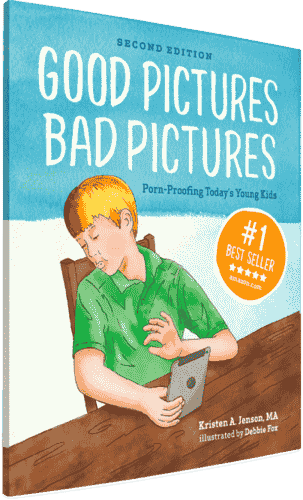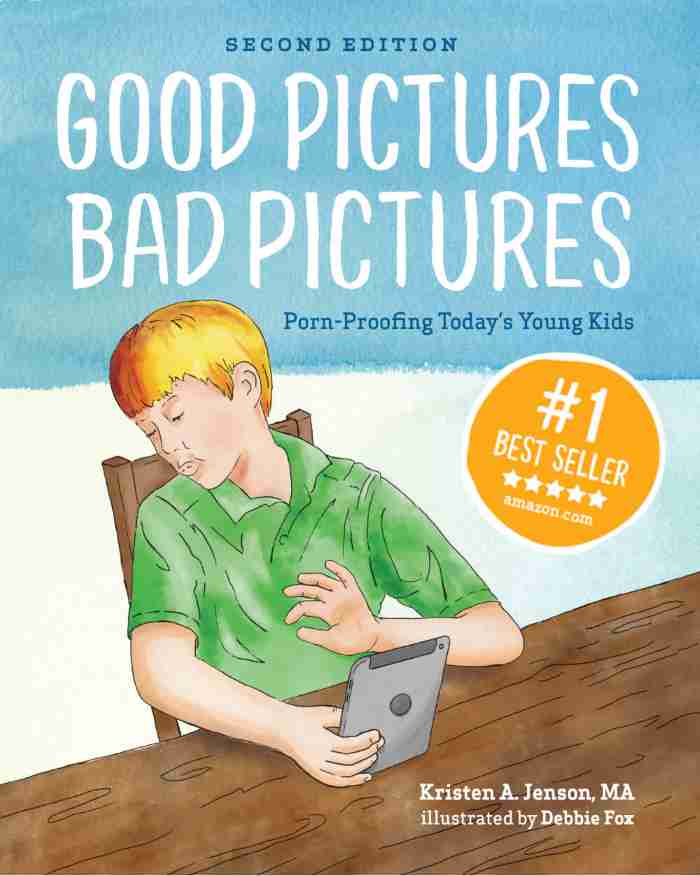Next Step Internet Safety: 3 Tips to Help Kids Install an Internal Filter
by Kristen A. Jenson (originally published on Net Nanny's blog, The Nanny Notes as Internet Safety: The Biggest Mistake (Smart) Parents Make)

A little girl goes to a friend’s home to play. Instead of playing with dolls, the two girls hide away in the closet and watch hard-core porn on the family’s iPad.
Is the fact that the iPad was not password-protected the biggest mistake her parents made?
No.
Smart parents understand that the Internet is a dangerous place for kids. To protect their children’s developing minds, they install filters on their computers and password protect mobile devices. They may even reach out to other parents to make sure they are doing the same.
Their biggest mistake? To think they’ve done enough.
So if a parent has already installed Internet filters, what else can they do to protect their kids? The answer: Teach them to install their own internal filter.
What’s an Internal Filter?
It’s the understanding of what pornography is, how it affects their brain, and an action plan to use when they are innocently exposed to it.
Here are three steps to help your kids install their own filter.
- Define the word pornography.
- Explain that viewing pornography can hurt their brain (just like drugs).
- Give them an action plan to use when they see sexually explicit media.
Define Pornography

Some parents shy away from even saying the word pornography, but that just gives it more power. Jill Manning, PhD, author of What’s the Big Deal About Pornography? and an expert who has testified before Congress on the dangers of pornography, advises parents to define the term so kids are clear about what we want them to avoid.
“Being clear on what pornography is and how to recognize it is the first step to protecting ourselves.”
Let’s bring this darkness out into the light without apology or shame. For some great tips, check out How to Define Pornography for a 7-Year Old.
Pornography Can Hurt the Brain
More and more brain research is demonstrating what mental health practitioners already know: viewing pornography can lead to a lifelong addiction that can be more difficult to overcome than addictions to drugs, alcohol or tobacco. And because kids have easy access to the Internet, these addictions are beginning younger and younger.

Recently, Valerie Voon from Cambridge University published the results of a study which showed that pornography addiction leads to the same brain activity as alcoholism or drug abuse. Another study done in Germany documented brain shrinkage in people addicted to pornography. These and many others studies are beginning to show that pornography can damage the brain just like drugs do.
What do your young kids need to know? That just like other drugs, viewing pornography can lead to brain damage and addiction. For more kid-friendly information about how pornography affects the brain (and a child’s freedom), read Hey Kids! Freedom Begins in Your Brain.
Give Your Kids an Action Plan!
This is where you get to help your kids with some specific strategies. Answer these questions to help you devise your family’s porn exposure action plan:
- When they see it, what should they do immediately? (Shut down the device—it’s good idea to practice this drill.)
- Who should they tell if they are ever exposed to pornography? (Kids often keep exposure to pornography a secret for a variety of reasons—encourage them to tell you and assure them that they won’t get in trouble.)
- How can they deal with the memories of the porn exposure that keep popping up? (This is a cognitive skill—for some helpful tips, read Teach Kids Two Ways to “Forget” Porn.)
[[CTA]]
If you’d like more ideas to help your kids proactively defend themselves against pornography, check out the read-aloud book Good Pictures Bad Pictures, Porn-Proofing Today’s Young Kids. It’s a comfortable story about a mom and dad who teach their child what pornography is, why it’s dangerous, and specifically how to reject it.
I am convinced of this truth:
As we face the dangers of pornography head-on, our kids won’t have to face them alone.
Please share this article with anyone you know who has young children or grandchildren. Thank you!


Good Pictures Bad Pictures
"I really like the no-shame approach the author takes. It's so much more than just 'don't watch or look at porn.' It gave my children a real understanding about the brain and its natural response to pornography, how it can affect you if you look at it, and how to be prepared when you do come across it (since, let's face it... it's gonna happen at some point)." -Amazon Review by D.O.






